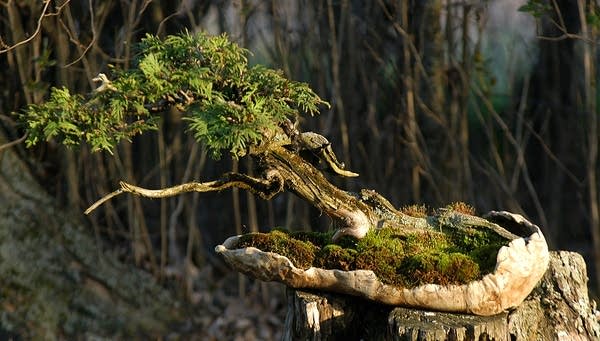Punk rocker of bonsai world at work in northern Minnesota

David Crust named this piece "The Lichen Tree," an American white cedar (Thuja occidentalis), trained since 2005. It is an intensely windswept design made from a smaller piece of an ancient larger tree found dangling from a waterfront rock slope.
Vickie Kettlewell for MPR News
Go Deeper.
Create an account or log in to save stories.
Like this?
Thanks for liking this story! We have added it to a list of your favorite stories.


